Barcelona is undoubtedly one of my favorite Spanish cities: colorful, carefree and lively, Barcelona is warm and welcoming every time I go back. Barcelona never tires, and even after this trip I can't wait to go back. And you? Have you ever been there? If the answer is no then you absolutely have to fix it as soon as possible, so let's see now the perfect 3-day itinerary for your long weekend in Barcelona. If you are asking me ig 3 days is enough to visit it, the answer is it depends: for any such big city it would take weeks, but with a good pace you will surely be able to see all the main things. What remains, well ... gives you a great excuse to go back!
So let's try to make the most of these three days; we have divided the days in this way:
Day 1
Passeig de Gràcia
Plaça de Catalunya
La Rambla
Mercat de la Boqueria
Palau de la Música Catalana
Catedral - Mercat Gòtic
El Ponte del Bisbe
Barceloneta (quartiere) - el Mercat de la Barceloneta
Barceloneta spiaggia - chiringuitos
Day 2
Arc de Triomf
Recinte Modernista de Sant Pau
Parc de la Ciutadella
La Ribera
Moco Museum
Basílica de Santa Maria del Mar
Plaça Reial
Day 3
Monument a Colom
La Rambla del Mar
Jardins de Mossèn Costa i Llobera
Montjuïc: Jardins de Miramar, Jardin de Mossèn Cinto Verdaguer
Fundació Joan Miró
Jardins de Laribal
MNAC - Palau National de Montjuic
Jardi Historic Botanic
Plaça de las Cascades - Font Màgica de Montjuic
Plaça Espanya - Arenas de Barcelona
The places highlighted in blue are all from the famous architect Antoni Gaudí: you'll find information about Casa Battló, La Pedrera - Casa Milà, Palau Güell, the Sagrada Família and Parc Güell in a dedicated article, so don't miss it and click here: Barcelona by Antoni Gaudí. To find out what you absolutely must taste in Barcelona, what are the typical dishes and where to find them - What to eat in Barcelona: the typical dishes and where to find them!
Passeig de Gràcia
Passeig de Gràcia is one of the most famous shopping streets in Barcelona, as well as being the home of Casa Battlò and La Pedrera.
Here you will find many famous luxury and non-luxury shops, such as H&M, Zara, Tiffany, Bulgari, Chanel, Gucci, Fendi, Versace, etc. There is also a very nice Lego Store, with reproductions of Casa Battlò, the Sagrada Familia and Parc Güell made of Lego. Passeig de Gràcia is also full of restaurants, not too cheap, and beautiful buildings.
A walk on this splendid street is a must in Barcelona, until you reach Plaça de Catalunya.
Plaça de Catalunya
Plaça de Catalunya is the largest central square in the city (and one of the largest in all of Spain): it's the hub of Barcelona and La Rambla and Passeig de Gràcia start from here. In this square there is also the El Corte Inglés department store, the Apple Store, a giant Primark and Urban Outfitters. After some shopping you can rest on the many benches and watch the myriad of pigeons and tourists take pictures in front of the splendid fountains.
La Rambla

La Rambla is one of the symbols of Barcelona: a 1.2 km tree-lined pedestrian boulevard that crosses the historic center of the city, from Plaça de Catalunya to the Monument a Colom, near the port.
It's the busiest street in the city, ideal for a walk on its wavy tiles that recall the waves of the sea. On either side of the Rambla you will find two of the districts that are part of the Ciutat Vella: the Raval (coming from Plaça de Catalunya on the right) and the Barrio Gotico (on the left). On this avenue you will also find the official store of FC Barcelona, the famous football team of the city, whose stadium is Camp Nou (which you can visit, I was there last time!). There are some things to see on La Rambla:
La Font de Canaletes: legend has it that those who drink the water from this fountain will surely return to Barcelona, so drink and let's see if the legend is true! It worked for me (:
Mercat de la Boqueria;
Erotic Museum: in this interesting museum you will find 800 works that trace the playful, religious and anthropological aspects of eroticism;
Mirò mosaic;
Plaça Reial (coming from Plaça de Catalunya on the left);
Palau Guell (coming from Plaça de Catalunya on the right);
Monument a Colom.
Mercat de la Boqueria

The Boqueria Market is one of the most famous and visited attractions in Barcelona, located on La Rambla: here you will find many tapas bars and stalls of typical products that will offer you so many options.
In the tapas bars you can eat on the spot sitting on stools at the counters, otherwise you can enjoy many tastings from different stalls trying various delights: from typical hams, to papas bravas.
Once here, you absolutely cannot leave without tasting the typical fruit smoothies and colorful packs of cut fruit ready to eat: it's ideal as a refresher when you're thirsty in hot days in the city and they are delicious!
You will find the market open from Monday to Saturday, from 8 to 20: 30, but only a few stalls are open throughout the day. Most are open from 8am to 2pm during the week and until 6pm on Fridays and Saturdays.
The best time to visit the Boqueria market is in the morning, when the market works at full capacity, but lunchtime is also a good time because you can eat here, even if it's quite crowded. We love markets, and this is a real must: we took the opportunity to have lunch trying a little bit of everything while walking, without spending a lot!
To find out more about what to taste in la Boqueria click here.
Plaça Reial
From La Rambla, coming from Plaça de Catalunya, on your right you will find Plaça Reial, a beautiful and romantic square, like an oasis between narrow streets and old buildings. Palm trees, arcades and a beautiful fountain in the middle are the setting for one of the most famous and popular squares in Barcelona.
The street lamps in the square are among the first works of Gaudì, his first assignment for the city of Barcelona. Don't miss the picturesque Passatge Bacardì.
This square is ideal for a tapas at sunset or an after-dinner drink: you will find several places to go wild or have a drink (click here to find out what to eat absolutely in Barcelona).

Monument a Colom
The Columbus Monument of Barcelona (also known as a memorial to the great explorer Christopher Columbus), is located at the end of the Rambla.
It is a large building facing the sea, 60 meters high, with the statue of Columbus on top. There is an elevator at the base of the tower that for € 6 will take you to the top, for a breathtaking view of the Rambla and the port: we didn't go up, the weather wasn't the best, but they say it's not bad! If you've been there let me know, so if it's worth it next time I'll miss it!

La Rambla del Mar - Port Vell
La Rambla del Mar is the last stretch of the Rambla, the most recent one, and it connects the end of the tree-lined avenue with a bridge, where the Monument a Colom stands, with Port Vell.
Port Vell, or also the 'old port', is the oldest part of the port of Barcelona: it was completely renovated during the urban innovation before the 1992 Olympics.
In Port Vell you will find the Maremàgnum (a shopping center with shops, but cinemas, bars and restaurants), the IMAX cinema and the largest aquarium in Europe.
A walk on the Rambla del Mar is a must, even if you do not intend to go to Maremàgnum, but simply to enjoy the view and the beauty of the place.
Palau de la Música Catalana

Located in the Born district, the Palau de la Musica is the most unique modernist auditorium in the world, proclaimed a Unesco heritage site in 1997: it was built between 1905 and 1908 by Lluis Domenech y Montaner.
Every year more than half a million people attend musical performances in the concert hall, ranging from symphonic music, opera, chamber music, flamenco, jazz, Cançó (Catalan song).
The external walls of the Palau de la Música are made of red stones, with pillars and facades covered with mosaics. At the corner of the entrance, a statue of Miquel Blay hangs on the facade while at the top of the facade of the music palace there are three busts of Bach, Palestrina and Beethoven. The Palau de la Música is built with large windows and a stained glass dome, which allows the concert hall to receive natural light.
Opening hours: 10:00 - 15:00
Prices:
Self-guided tour € 14 (both online and on site)
Guided tour € 18 (both online and on site) - duration 50 minutes
Catedral

Do not confuse the Cathedral of Barcelona, whose official name is Cathedral of the Holy Cross and Saint Eulalia with the Expiatory Temple of the Sagrada Familia: the Cathedral of Barcelona, seat of the bishopric and therefore the most important church in hierarchical terms, is located in the Gothic quarter, on the Plaçita de la Seu also known as Plaça de la Catedral.
It's possible to visit the cathedral for free during prayer times on weekdays at these times:
8:30-12:30 and 17:45-19:30 (in the afternoon the entrance is from the right door of the main facade).
On Saturdays and public holidays: 8:30-14:30 and 17:15-20:00.
Sundays and holidays: 8:30-13:45 and 17:15-20:00.
The free visit includes access to the ground floor and the cloister, and the internal courtyard with the famous 13 geese.

During free visit times, you will have to pay € 3.00 to access the terrace or the choir (€ 6.00 for both).
The free visiting hours are those dedicated to prayer, if they realize that you do not intend to pray it's possible that they will not let you in.
On the other hand, paid admission takes the form of a "donation", with a minimum amount of € 9.00 (in this case, you should buy the ticket online directly from the official website so as not to queue).
On weekdays: 10:30-18:30,
Saturday and the eve of holidays: 10:30-17:30.
With paid admission you will be entitled to visit the main floor of the cathedral, the cloister, the choir, the terrace, the museum and the chapel of Lepanto and in addition they will give you a virtual audio guide to learn more about the history of the Barcelona Cathedral.
Cover your shoulders and up to your knees before entering and make sure you take off any type of headgear.

Mercat Gòtic
The Gothic Market is Barcelona's most popular antiques and vintage market, located in front of the Cathedral, on Plaza de la Seu.
It's held every Thursday from 10:00 to 20:00 and on some holidays, but I refer you to the official website to check the days. We stumbled upon it by chance on May 1st: it's small but very nice, definitely worth a visit if you are lucky enough to be in town on the days they keep it.
El Pont del Bisbe
With the Cathedral in front of you, go to the right alongside the Church and walk along Carrer del Bisbe (in the Barrio Gotico), a wonderful street full of splendid historic buildings, including El Pont del Bisbe. This bridge connects two buildings, the Palau de la Generalitat and the Casa del Canonges.
If you look closely at the bridge you will notice a skull (apparently authentic) pierced by a dagger: it's said that if the dagger is removed Barcelona will collapse.
Barceloneta

The Barceloneta district is a spit of land a close to the historic center of Barcelona: the interior is a maze of parallel and perpendicular alleys full of public houses, once inhabited by local fishermen, and typical neighborhood bars where you can taste some of the best tapas in Barcelona and have a beer for very little money.
Here you will also find the Mercat de la Barceloneta, much smaller than that of la Boqueria, but an excellent solution for buying something to enjoy on the beach. The promenade is full of young people and always very crowded: Barceloneta beach is the place where to play sports and enjoy sunny afternoons.
The promenade is ideal for a nice stroll up to W Barcelona, the sail-shaped hotel at the top of Barceloneta. On the beach you will also find many chiringuitos (in summer and spring) where you can nibble something and have a nice beer. The beach is free, and you will often find street artists, sportsmen who train in the stations used as open-air gyms and free beach volleyball courts. We took the opportunity to rest for a few hours in the early afternoon after a nice walk downtown in the morning.
Barceloneta therefore offers you two possibilities: to go in search of the popular soul of Barceloneta in the traditional streets, bars and restaurants of the interior or to have fun on the beach, day and night. Or maybe both!

Arc de Triomf
The Arc de Triomf is located north of the Parc de la Ciutadella, a few steps from the latter and it's a great place to enjoy a nice walk. It's a monumental arch about 30 meters high, designed by the architect Josep Vilaseca as the main entrance to the universal exhibition of 1888, and built together with the passeig of Lluís Companys, the long avenue that leads to the Parc de la Ciutadella.
Unlike other similar works in Europe, such as the arches of Rome or Paris, the Arc de Triomf was not built to celebrate a military victory, but to pay homage to humanity's economic, artistic and scientific progress on the occasion of the exhibition. universal.
Parc de la Ciutadella

From the Arc de Triomf, in a few minutes on foot, we arrive at the splendid Ciutadella Park, in El Born district; it's the largest park in the city.
The Ciutadella Park has a long history: initially it was a fort, designed in the shape of a star in 1715 for King Felipe V to be used by his army in the fight against the kings of Bourbon, then it became a prison in the time of Napoleon. In 1888 the park was used for the Universal Exposition, during which many park buildings were built.
It's an oasis of peace in the middle of the city, with lots of greenery, paths and playgrounds for children. The park is ideal for giving a few hours of well-deserved rest after the long walks around Barcelona: we took the opportunity to lie down for a couple of hours, as an alternative to the crowded Barceloneta. During the day, lots of guys will come by to sell you beers or fresh bottles of water, so don't worry if you haven't brought anything to drink, the beer will come straight to you (:
Inside the park there are many things to see:

L'Hivernacle: it's an old greenhouse in Catalan modernism style. It's a mega shed of bricks, iron and wooden slabs inside which there are different varieties of subtropical plants that survive thanks to the sun's rays;
La Font de la Cascada: it's a splendid fountain at the top of which is the famous triumphal arch with waterfall built for the Universal Exposition. It's definitely one of the most spectacular places in the park. The waterfall was designed and engineered by Josep Fontseré with the help of a very young Antoni Gaudi for some decorative details;
Parliament of Catalonia: open on Saturdays from 10am to 7pm, while on Sundays and public holidays from 10am to 2pm;
A mammoth in the middle of the park;
The lake in the park: here you can rent a rowboat and take a ride in the lake;
The musical tent of the park, where people of Barcelona often meet to dance;
The Castell dels Tres Dragons: designed by Lluís Domènech i Montaner, the same as the Palau de la Musica, who had been entrusted with the task of building a cafeteria and restaurant that could accommodate large traders and visitors to the universal exhibition in Barcelona.

La Ribera - El Born
La Ribera is the most rebellious and liberating district of Barcelona: located a few steps from the Parc de la Ciutadella, among its quaint picturesque streets we have found many young artists in action and you can observe the new trends.
The district is always full of festivals, dances, social activities and street decorations.
It's highly recommended for some tapas and a beer sitting in the hidden squares, admiring the alleys, the shop windows of unknown talents, the original art galleries. In Plaça del Born we found a delightful vintage market: there are countless surprises in this neighborhood!
Basílica de Santa Maria del Mar
Let's not confuse the Cathedral with the Basilica of Santa Maria del Mar, in the Born district, near the many aforementioned cafes. The latter is a Gothic-style church built in the same period as the cathedral thanks to the participation of all the inhabitants of the Ribera district who provided funds and labor.
It's often called the Cathedral of the Sea although it's not the residence of the bishop as a representation of the antithesis between the monarchical power (mandator of the construction of the real cathedral) and the people who decided to build their own. Admission is free, or at least we managed to enter during the mass just long enough to take a look: the church is very beautiful, if you are passing through, perhaps in the Born or to go to the Moco, stop for a few minutes!
Moco Museum

Opened on October 16, 2021, the Moco Museum in Barcelona is the equivalent of the famous Moco in Amsterdam (at Museumplein), which I love! We could not therefore miss a visit to the brand new headquarters in Barcelona, and I was not at all disappointed!
Located in La Ribera in a somewhat hidden alleyway, the Moco is located inside Palazzo Cervelló, an independent museum that houses modern, contemporary and street art works by artists such as Banksy, Basquiat, KAWS, Keith Haring, Jeff Koons, Andy Warhol, and many more!
Going to the website, you have the opportunity to take advantage of the free audio guide.
The works are splendid, the exhibition is well articulated and very interesting, with splendid pieces, as well as the final interactive exhibition! If you are a lover of modern art and street art, you certainly can't miss the Moco!
Opening hours:
Monday - Thursday 09:00-20:00
Friday - Sunday 09:00-21:00
Prices:
Adults with audio guide € 17.50
Students € 12.50
Recinte Modernista de Sant Pau

The Recinte Modernista of the hospital of Santa Creu i Sant Pau is one of the most emblematic architectural works of Montaner: it was a modernist-style hospital complex, inaugurated in 1930, consisting of a main building, 27 pavilions and a series of underground tunnels, immersed in a large green area.
Declared a World Heritage Site by UNESCO in 1997, the Recinte is currently used as a cultural center, hosting events, exhibitions, exhibitions and concerts.
The building is beautiful! We did not go in, but even from the outside it's a splendid sight: it's located a few hundred meters from the Sagrada Familia, so I recommend you take a trip, it's really worth it.
Opening Hours:
Tuesday to Friday: 10:00 - 14.30
Weekends and holidays: 10:00 - 17:00
Days of free admission: April 23, Museum Night, September 24
Prices:
The Sant Pau complex can be visited freely or accompanied by a guide.
Free visit: 15 €
Guided tour: € 20
Audio guide app: € 2
Jardins de Mossèn Costa i Llobera (Montjuïc)

The Jardins Mossèn Costa i Llobera are among the lesser known gardens of Montjuic, which makes them a quiet and always uncrowded place.
The garden features a vast expanse of tropical plants and cacti from different parts of the world. It's home to 800 species of cacti, succulents and subtropical trees. We immediately wondered how such a garden could therefore survive the winter, being outdoors, and the answer lies in the fact that it stands in a strategic position. The gardens are in fact located in the southern part of Mount Montjuic, near the sea, which allows temperatures to be 2 ° higher than the rest of the area, thus creating a microclimate suitable for plants. Furthermore, being quite protected, strong winds are avoided.
Admission is free, don't miss it! I recommend that you do it as the first stop coming from the seafront to reach Montjuic: the climb is perfectly feasible and you can always rest in the shade of the many benches in the park enjoying the view.
Montjuïc

On the occasion of the Universal Exhibition of Barcelona in 1929, palaces, pavilions, parks, botanical gardens, sports stadiums and exhibition spaces were built on the hill. Some of these buildings have survived and now serve as a museum. The Olympic stadiums were renovated and more were added after the 1992 Olympics. Montjuïc is full of gardens: we walked almost all of them, coming from the seafront to the MNAC.
Here I bring you the most beautiful:
Jardins de Mossèn Costa i Llobera:
Jardins de Miramar (from here you will have the best view from above on Barcelona);
Jardins de Laribal and next to those of the Grec Theater;
Joan Maragall Gardens (open only Saturdays and Sundays);
Jardi Historic Botanic (free access, 10am to 6pm).
To visit Montjuic you can choose between several options:
go up with the Teleférico del Puerto starting from Port Vell;
do as we did and walk up from the seafront starting from the Jardins de Mossèn Costa i Llobera and cross the parks until you reach the Palau National and go down towards Plaça d'Espanya;
follow the itinerary in reverse starting from Plaça d'Espanya; go up the mountain using the Montjuïc cable car.
Teleférico del Puerto
Opening hours:
from November to February: 11:00-17:30
from March to May and from the second half of September to October: 10:30-19:00
from June to mid-September: 10:30-20:00
Prices:
return ticket € 16.50
one way € 11.00
Teleferica de Montjuïc
The cableway route starts at Parc de Montjuïc, near the Joan Mirò Foundation, and leads to Montjuïc Castle. On the way back, the cable car stops at the Mirador de l’Alcalde.
Opening hours:
from November to February 10:00-18:00
from March to May and October 10:00-19:00
from June to September 10:00-21:00
Prices:
return ticket € 12.20
one way € 9.40
Fundació Joan Miró

The Joan Miró Foundation is a cultural institution in Barcelona dedicated to the great Catalan painter Joan Miró, founded by the same in 1971; this gallery brings together the finest public collection of the artist's works in the world.
Inside there are paintings, sculptures and drawings by Miró, a genius of surrealism.
If you are a lover of the genre and you are in Montjuïc, I recommend that you drop by: the exhibition is splendid and very interesting, but above all very special.
We had a lot of fun imagining what Miró meant with each of his works and interpreting it!
Opening hours:
Monday closed
Tuesday to Saturday: 10:00-20:00
Sunday: 10:00-18:00
Prices:
Adults € 13
Students € 7
MNAC - Palau National de Montjuïc
The Museu Nacional d’Art de Catalunya, also called by the acronym MNAC, is one of the most important museums in Barcelona.
It's located on the slopes of Montjuic, in front of Plaza de Espanya, and houses a remarkable collection of Romanesque paintings and exhibitions of Catalan art from the 19th and 20th centuries.
The MNAC is located inside the Palau Nacional de Montjuïc, a huge building whose facade is adorned with a large dome inspired by the basilica of St. Peter in the Vatican, flanked by two smaller domes, while four towers modeled on the cathedral of Santiago de Compostela stand alongside the corners of the Oval Room.
Opening hours:
from October to April - from Tuesday to Saturday 10:00-18:00, Sunday and holidays 10:00-15:00
from May to September - from Tuesday to Saturday 10:00-20:00, Sunday and holidays 10:00-15:00
Closed on Mondays except holidays, also closed on January 1st, May 1st and December 25th.
Prices:
General ticket: 12 €
Basic Ticket € 2 - allows access to the building, to the rooftop, not to the exhibitions
Free admission every Saturday from 3pm and the first Sunday of each month.
Font Màgica de Montjuic

The Magic Fountain is located at the end of Avinguda Reina Maria Cristina which begins in Plaça d'Espanya, just below the MNAC.
The fountain is lit up in the evening with a magical spectacle: it has an elliptical shape and has as many as 30 water games, each with its own particular color. No admission ticket is required to attend the Font Magica shows, it's free: just go to the Fountain at the scheduled times. Timetables:
November to March: Friday and Saturday 19:00 - 20:30
April, May, September and October: Friday and Saturday 21:00 - 22:30
From June to August: Thursday to Sunday 21:30 - 23:00
Even if the fountain is not in operation it is still wonderful: from here you can enjoy one of the most spectacular views over Barcelona.
Plaça Espanya - Arenas de Barcelona
Plaça d'Espanya, with its two Venetian towers and the Magic Fountain, is the gateway to Montjuïc: it's one of the most important squares in Barcelona. It was built on the occasion of the 1929 Universal Exposition, at the foot of Montjuic.
The Avinguda de la Reina Maria Cristina connects Plaça d'Espanya to the Museu Nacional d'Art de Catalunya while the two twin towers are built in Venetian style are the symbol of the street, built right at its junction with Plaça d'Espanya (they were modeled on the appearance of the bell tower of the Basilica of San Marco in Venice).
On Plaça d'Espanya we also find the Arenas de Barcelona which, unlike the Valencia arena, is no longer a bullfighting arena but is home to a large and modern shopping center. The building is impressive and beautiful: from the outside you would never expect to find 116 shops inside, a cinema and many restaurants. I recommend that you go up to the top floor at least, up to the free terrace, which will allow you to enjoy a breathtaking view of the city and Montjuïc.
Here we are at the end of our 3 days itinerary in Barcelona: I think I told you everything you need to know to spend a wonderful long weekend in this magnificent Spanish city.
In case I forgot something or you need some more information comment here below!
We didn't talk about the wonders of Gaudí: to learn more about Casa Battló, La Pedrera - Casa Milà, Palau Güell, the Sagrada Família and Parc Güell I remind you the post dedicated to Barcelona by Antoni Gaudí and his splendid works: you will find all you here: Barcelona by Antoni Gaudí.
To find out what you absolutely must taste in Barcelona, what are the typical dishes and where to find them - What to eat in Barcelona: the typical dishes and where to find them!
If, on the other hand, you are still planning your trip and you need practical information such as where to stay, how to move around Barcelona or useful tips on how to save money, here is the post for you - Planning a weekend in Barcelona: useful tips and tricks for traveling low-cost.
Have a nice trip!







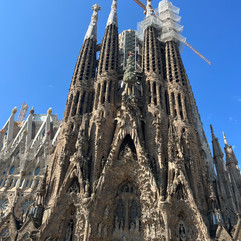




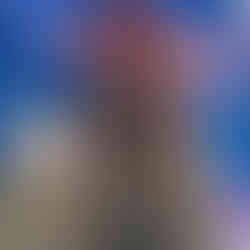


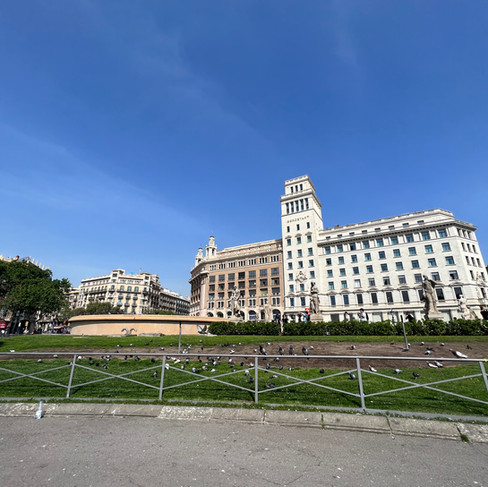








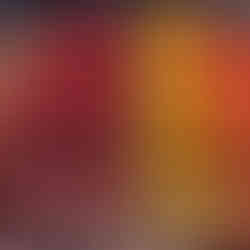



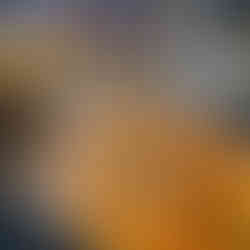




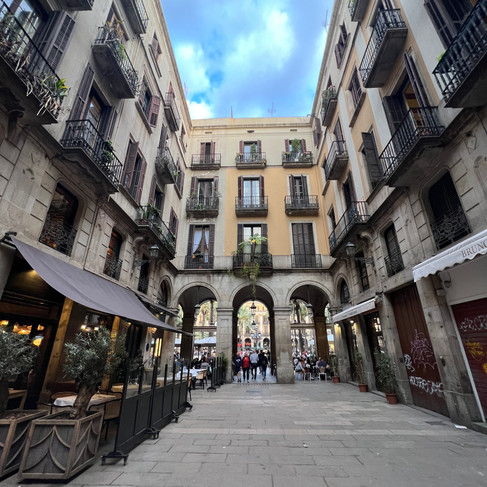

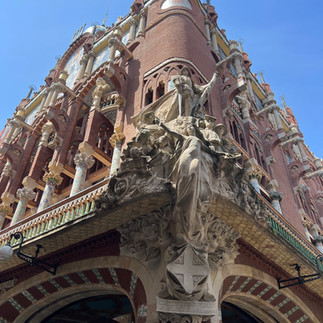
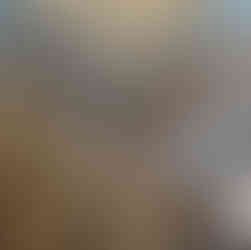












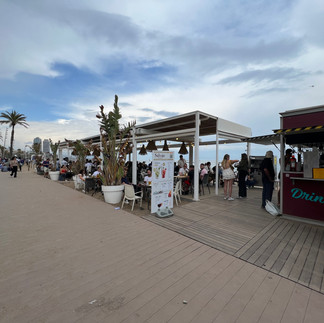


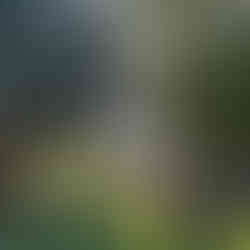





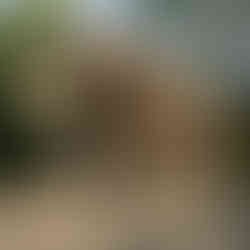





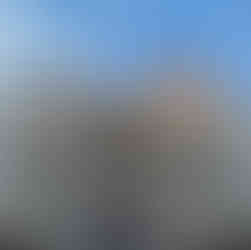

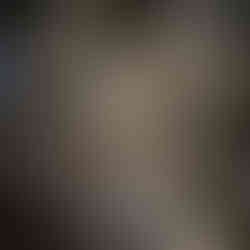








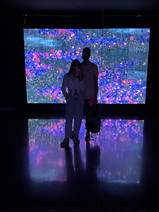






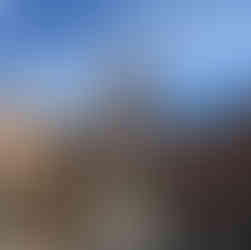


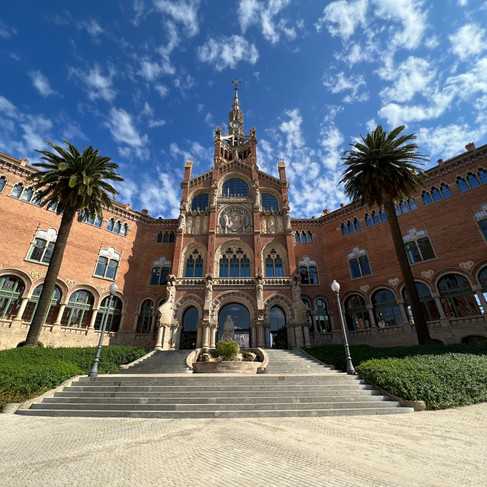





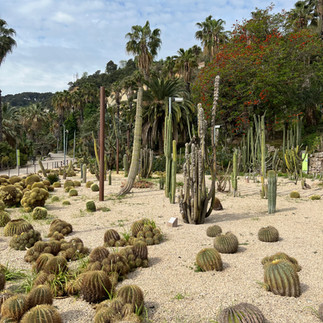













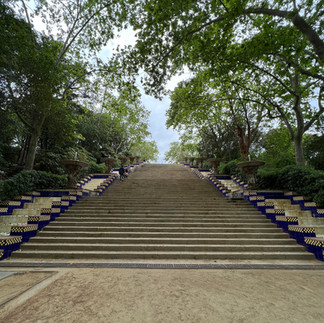


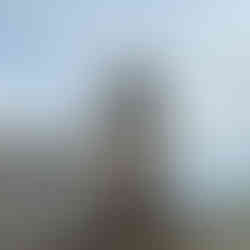





Comments